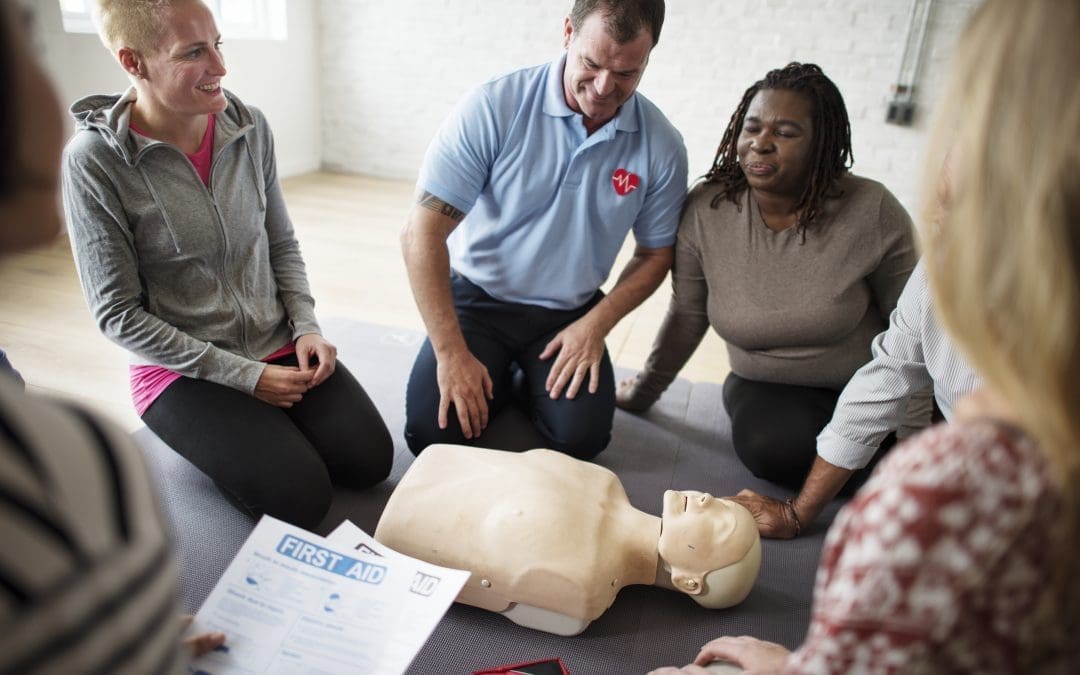Introduction
Picture this: you’re at work, in the gym, or simply walking through a mall when someone suddenly collapses. In that split second, panic can set in — but if you’re trained in Basic Life Support (BLS), you won’t just stand frozen. You’ll know exactly what to do.
That’s the power of Basic Life Support training. It equips ordinary people and healthcare professionals alike with life-saving skills to act quickly during emergencies like cardiac arrest, choking, or respiratory failure. In this blog, we’ll break down what BLS training is, why it matters, how it works, and how you can get certified in 2025.
What Is Basic Life Support (BLS)?
Basic Life Support (BLS) is a set of emergency medical skills used to keep someone alive until professional help arrives. It focuses on:
High-quality CPR (Cardiopulmonary Resuscitation)
Rescue breathing when a person isn’t breathing normally
Using an Automated External Defibrillator (AED)
Choking relief techniques for adults, children, and infants
Unlike advanced medical care, BLS doesn’t require invasive equipment or hospital settings. It’s simple, practical, and can be learned by anyone.
Why Is BLS Training Important?
Saves lives in critical moments – Immediate CPR and defibrillation can double or even triple survival chances during cardiac arrest.
Bridges the gap before EMS arrives – In many cases, emergency services take 5–10 minutes to reach the scene. Your quick action keeps oxygen flowing to the brain during that time.
Empowers individuals – Whether you’re a healthcare worker, teacher, parent, or fitness coach, BLS training gives you confidence to take charge in an emergency.
Workplace & professional requirement – Hospitals, clinics, schools, gyms, and even corporate companies now often mandate Basic Life Support certification.
The Chain of Survival
A key concept taught in every BLS course is the Chain of Survival, which includes:
Immediate recognition of cardiac arrest and calling for help
Early CPR with high-quality chest compressions
Rapid defibrillation with an AED
Advanced life support once professionals arrive
Post-cardiac arrest care and recovery
The stronger each link in the chain, the higher the chances of survival.
What You’ll Learn in Basic Life Support Training
A certified BLS training course usually covers:
Adult, child, and infant CPR techniques
Correct compression depth, rate, and hand positioning
Rescue breathing using barrier devices
Safe and effective AED operation
Choking relief for different age groups
Team dynamics in multi-rescuer scenarios
Real-life emergency simulations
Courses are designed to be hands-on and interactive, making it easier to remember skills when stress levels are high in real emergencies.
How Long Does BLS Certification Last?
Most Basic Life Support certifications are valid for 2 years. After that, you’ll need to take a BLS renewal course to refresh your skills and stay updated with the latest international guidelines.
Who Should Take BLS Training?
While healthcare professionals like nurses, doctors, and paramedics are the primary audience, BLS training is for everyone:
Teachers & school staff
Corporate employees
Fitness trainers & coaches
Parents & caregivers
Security guards & first responders
University students in healthcare fields
How to Get Certified in BLS Training in 2025
Choose an accredited provider – Look for organizations approved by the American Heart Association (AHA), Red Cross, or local health authorities.
Select your format – Options include:
In-person (best for hands-on practice)
Blended learning (online + classroom skills session)
Complete the course – Training usually lasts 3–4 hours, with both theory and practice.
Pass the skills test & exam – Demonstrate CPR, AED, and choking relief techniques.
Get your certification – Valid for 2 years and recognized worldwide.
Real Impact: Why BLS Matters
Every year, thousands of lives are saved thanks to bystanders trained in Basic Life Support. In workplaces, schools, and even public spaces, trained individuals have successfully revived people before paramedics arrived.
By taking BLS training in 2025, you’re not just adding a certificate to your CV — you’re equipping yourself with the power to save a life.
Final Thoughts
Emergencies don’t wait. Whether at home, work, or in public, being trained in Basic Life Support means you can step in confidently when it matters most.
If you haven’t yet enrolled in a BLS training course, make it your goal this year. It’s an investment in yourself, your career, and the safety of those around you.
👉 For more details please visit our BLS training course page
👉 Be prepared. Get certified. Save lives.


